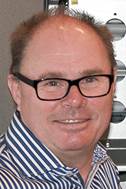With our top three measures for air handling units – regular maintenance, high flow rates, minimised return air – we can optimise operation and maintain a healthy indoor climate.
The benefits of good ventilation and indoor air quality for comfort, health and productivity in both places of work and homes is undisputed. According to WHO “poorly ventilated buildings affect air quality and can contribute to the spread of disease”. Other studies show that increasing the outdoor ventilation rate and minimising recirculation has a significant effect on reducing the spread of disease. With this in mind, what is the three most important actions to take, in order to optimise air handling unit operation?
1. Follow maintenance instructions
It is important that the ventilation unit is correctly set-up and well maintained and that the proper service routines are followed. Service personnel should follow the hygiene recommendations given by the authorities. Wearing protective clothing and washing hands after the work is completed is recommended.
2. Maintain a high ventilation rate
If not already running 24/7, we recommend that the ventilation is run for longer periods so that the building is well ventilated both before and after occupation.
3. Minimise internal leakage
To obtain the best indoor air quality we recommend that return air is minimised. Some important measures are required to minimise air leakage in units with rotary heat exchangers. To prevent the rotor from transporting air from the extract to the supply it is important that a purging sector is fitted. The function of the purging sector requires that the pressure difference is correct which means, firstly, the fans need to be correctly positioned so that they are both downstream of the rotor in their respective airstreams and, secondly, that the extract air is correctly throttled to create the correct pressure difference between extract and supply in accordance with our installation instructions.
This may seem complicated, but it is good to know that in any Swegon air handling unit with rotary heat exchangers from the GOLD, SILVER C and COMPACT families, this is already taken care of. These units are all designed with the fans in the correct position and are fitted with purging sectors as standard. The rotor is well sealed both on the perimeter and across the diameter where the supply and extract airstreams are separated. Pressure measurement nipples are provided to make it easy to check the pressure balance and a pressure reducing perforated plate is included in the unit. This means that the leakage rate is less than 1% for both units with rotary and plate heat exchangers.
The GOLD unit control system also features a special control function that we call Carry Over Control, that controls the rotational speed of the rotor when the airflow rate is reduced in variable air volume systems. This ensures the function of the purging throughout the operating range and reduced leakage even further. The function is easily activated via the GOLD control pad. The video clip below explains how this function can help safeguard a clean air supply into the building.
To summarise the advice, we recommend:
- Service the units in accordance with the instructions and follow good hygienic practices
- Maintain good flow rates of outdoor ventilation with a minimum of return air
- Ensure that units are correctly set to avoid any unintentional return air risk
These are the actions that we think are most important to focus on in the short term. In the longer term, it is of course also important that the entire HVAC industry work together to increase knowledge on healthy indoor climate and share best practises. Swegon is an active part of industry organisations such as Eurovent to publish recommendations on internal leakage and work is continuing to get it fully addressed in Certification and EN Standards.

























.jpg?width=75&name=Image%20(5).jpg)








.jpg?width=75&name=magnus%20andersson_550x550%20(1).jpg)











.jpg?width=75&name=0%20(1).jpg)





-4.png?width=75&name=MicrosoftTeams-image%20(3)-4.png)















